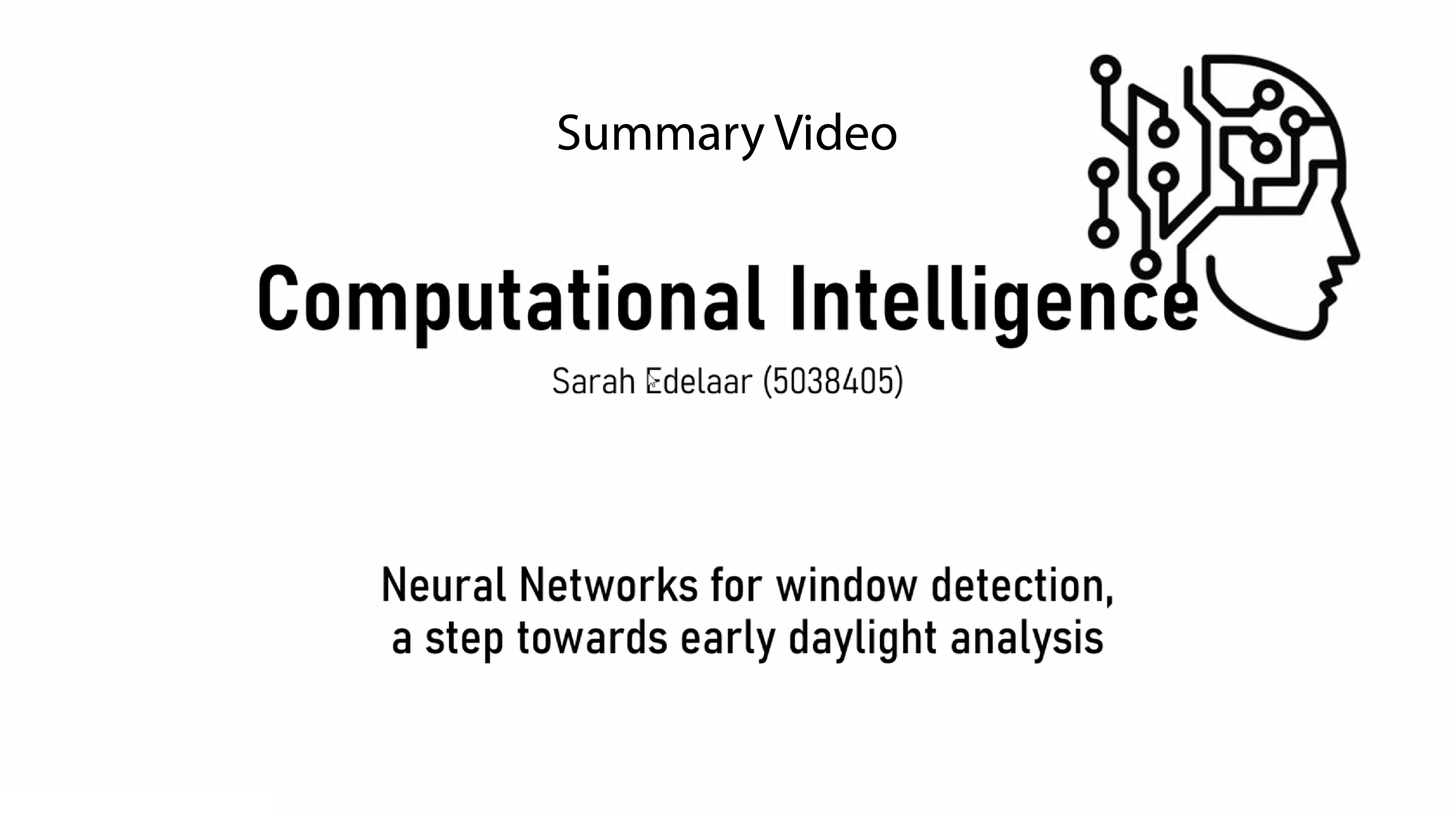Project: Window Detection – Edelaar
-
Intro
-
Technical Aspects
Information
| Primary software used | Python |
| Software version | 1.0 |
| Course | Computational Intelligence for Integrated Design |
| Primary subject | AI & ML |
| Secondary subject | Machine Learning |
| Level | Intermediate |
| Last updated | November 27, 2024 |
| Keywords |
Responsible
| Teacher | |
| Faculty |
Project: Window Detection – Edelaar 0/1
Project: Window Detection – Edelaar
Neural Networks for window detection, a step towards early daylight analysis
Buildings account for almost 40% of total energy consumption. The difference between predicted and actual energy consumption, known as the Energy Performance Gap (EPG), plays a significant role. To address the EPG, early architectural assessment of building physics, particularly daylight analysis, is critical. Proper daylight management is essential to reduce energy consumption.
This project aims to simplify daylight analysis on floorplans by using machine learning. This will make the process more assessable in the early design phase. The report describes the workflow, which starts with the detection of windows in floorplans. Two different ML models were used in this project: YOLOv1 (YOLO version 1) and YOLOv8 (YOLO version 8). YOLO models are known for their efficiency in object detection using Convolutional Neural Networks (CNNs). YOLOv1, built from scratch in Python, and YOLOv8, implemented in Google Colab, are trained and tested on the same dataset of floorplan images. The two versions were used and compared to get a better understanding of the YOLO workflow.
The report explains the main differences between the two YOLO versions. YOLOv1 divides the image into grids and uses anchor boxes to predict object locations, whereas YOLOv8, a more advanced model, predicts on the entire image without using anchor boxes, increasing speed and accuracy. As expected, YOLOv8 was faster and more accurate than YOLOv1. YOLOv8 would most likely be suitable for good window detection, the first step in the workflow towards early stage daylight analysis.

Project Information
- Title: Neural Networks for window detection, a step towards early daylight analysis
- Author(s): Sarah Edelaar
- Year: 2024
- Type: Course Project, Building Technology, Computational Intelligence for Integrated Design
- ML tags: Convolutional Neural Network, daylight analysis, object detection, YOLO
- Topic tags: Climate design, Comparative analysis
Project: Window Detection – Edelaar 1/1
Technical Aspectslink copied
Software & plug-ins used
- YOLOv1: Python with PyTorch
- YOLOv8: Google Colab with imported model from RoboFlow
ML-workflow

The main workflow of the YOLO model is as follows. In the YOLOv1 model, the image is divided into a grid of S x S cells. Each cell is resized to the required size, and each cell is scored on two features. The model predicts the class type of the main object within that grid cell by classification. It then uses regression to predict whether the cell contains the centre of an object. If the model predicts that there is a centre within the cell, a bounding box is created. This bounding box may overlap several cells. These two outputs are cleaned and combined.The output is a cleaned image with bounding boxes that can recognise different classes (Redmon, et al., 2016). For the YOLOv8 model, the overall method is almost the same, except that the model predicts on the entire image at once, rather than predicting on the individual grid cells (Wang et al., 2023).

Write your feedback.
Write your feedback on "Project: Window Detection – Edelaar"".
If you're providing a specific feedback to a part of the chapter, mention which part (text, image, or video) that you have specific feedback for."Thank your for your feedback.
Your feedback has been submitted successfully and is now awaiting review. We appreciate your input and will ensure it aligns with our guidelines before it’s published.
